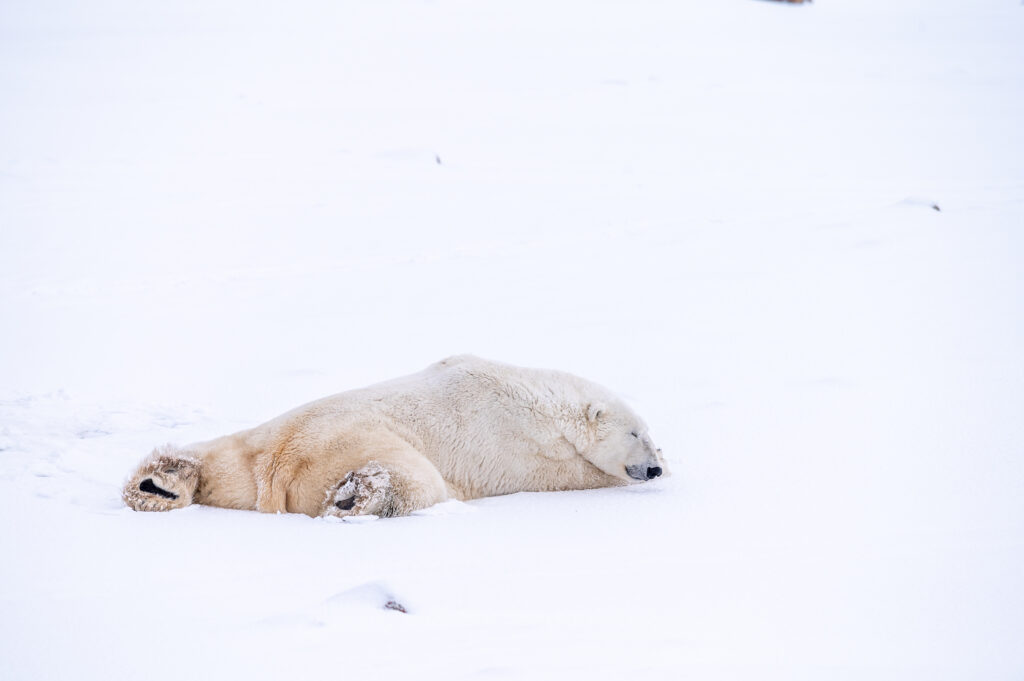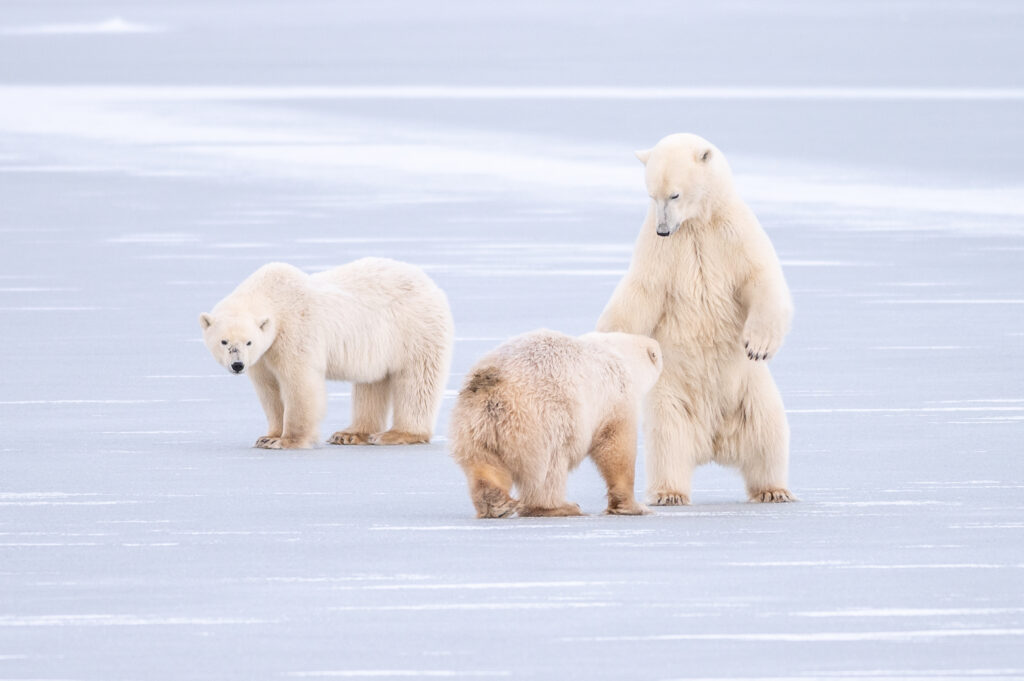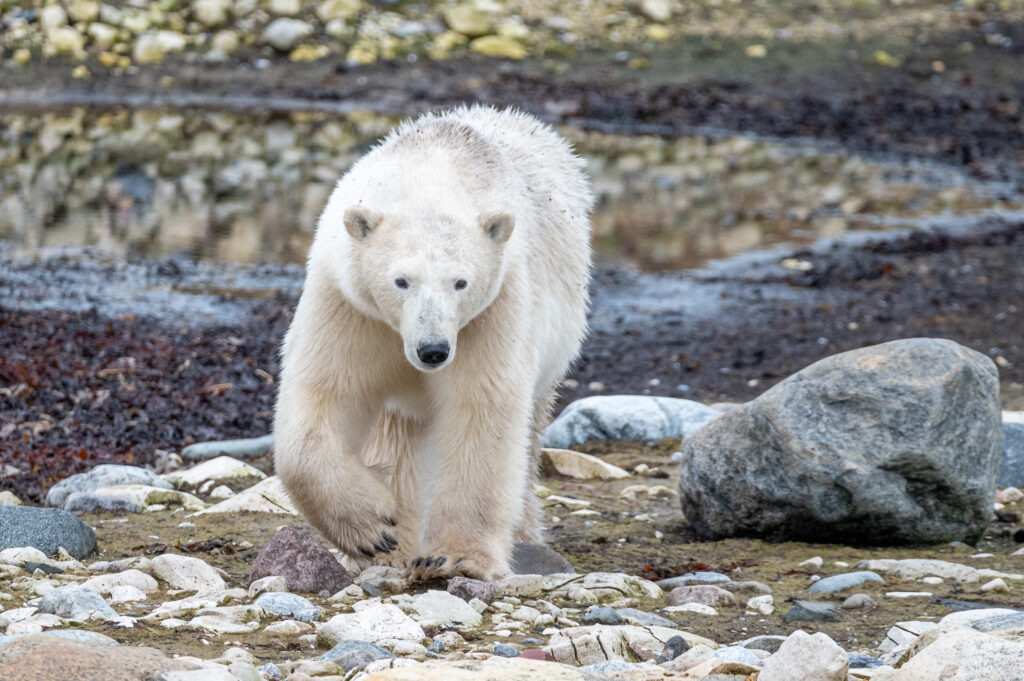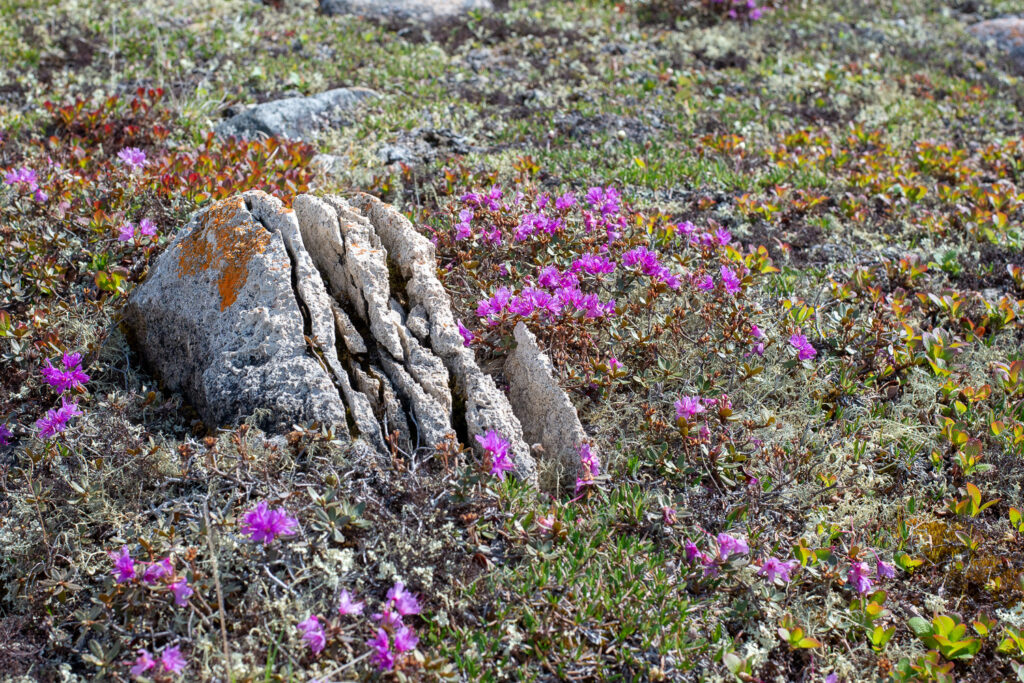Bears inhabit a wide range of ecosystems around the world and their high conservation profile makes them ideal umbrella species. Umbrella species are animals that have a high value for conservation because by protecting them you provide protection for their habitats and everything that lives within that habitat. These habitats may contain dozens or even hundreds of species of flora and fauna that could be endangered or vulnerable. By protecting one umbrella animal or plant, such as a bear, these lesser known and out of the public eye species will benefit. The Polar Bear, for example, is a top of the food chain carnivore that inhabits the arctic and reigns supreme on top of the sea-ice food web.

Umbrella species also commonly found to also be a keystone species. Keystone species are often an important part of the food chain and through their diet keep a variety of species in check. Polar bears prey on Ringed Seals and Bearded Seals primarily, keeping these marine mammals populations in check. Without the polar bear, the population of seals could grow at a rapid rate and cause a cascade of disturbance down the food chain. Fish, invertebrates, zooplankton, plankton, etc will all face population imbalances if their predator populations change resulting in a complete shift in the organization of the food web.

Umbrella species are also often Flagship species or iconic species. These species are usually animals that are widely recognized by the greater population and become the main focus of conservation campaigns. With the polar bear, it is synonymous with conservation in the arctic. It is unlikely to see advertising or lobbying attributed to the arctic that doesn’t discuss the polar bear. Humans are inherently drawn to bears for a multitude of reasons and they have become the main flagship species of arctic conservation. Having a flagship species is important for being able to connect specific conservation messages to people who may otherwise never be exposed to remote environments. For example, how can we connect a Grade 10 Biology student in Miama, Florida with important conservation initiatives in Canada’s high arctic? The answer is with a flagship species, or in this case, a polar bear.

The polar bear is an umbrella species through and through. There are countless conservation initiatives that have been centered on the protection of the Ice Bear. The umbrella they carry protects not only arctic marine species, but also terrestrial species. Polar bears utilize land when the sea-ice hunting platform is not available during the summer months and the female polar bears can use land for digging their maternity dens. By protecting the polar bear our national and international policy-makers are forced to observe the needs of both their marine and terrestrial environments.

The Wapusk National Park and adjacent Churchill Wildlife Management area is a prime example of the polar bears umbrella. Found in Northern Manitoba on the edge of the Hudson Bay, these two zones protect one of the highest concentrations of polar bear den sites on earth. The protections were put in place primarily for the unique “peat-mound” den sites that can be found upwards of 60km inland from the coast. The effect of the polar bear as an umbrella species is evident when you examine the biodiversity found in this remote park system. Caribou migrations and calving grounds, wolves, red foxes, arctic foxes, snowshoe and arctic hare, wolverines, black bears, grizzly bears, moose, hundreds of species of migratory bird nesting sites, thousands of unique-to-the-tundra kettle ponds, and a boreal forest to tundra transition zone that supports thousands of plants, mosses, and lichen species. The conservation value of this region protected mostly for polar bears is immense.


Additionally, in the arctic marine ecosystem, including the sea ice, the polar bear umbrella can provide protection for Beluga Whales (who arguably also have an umbrella of their own), Bowhead Whales, Narwhal, Walrus, seals, fish, invertebrates, plankton, algae, and the sea ice itself.
The polar bear makes an excellent umbrella species and if regional conservation efforts can be focused on the species then thousands of other species will benefit. In an effort to maximize the benefits of money spent on conservation, looking for species that have such a broad reaching umbrella is a beneficial tactic.


Pingback:Moon Bears in the Minshan Mountains, Sichuan, China – Nature Knowledge